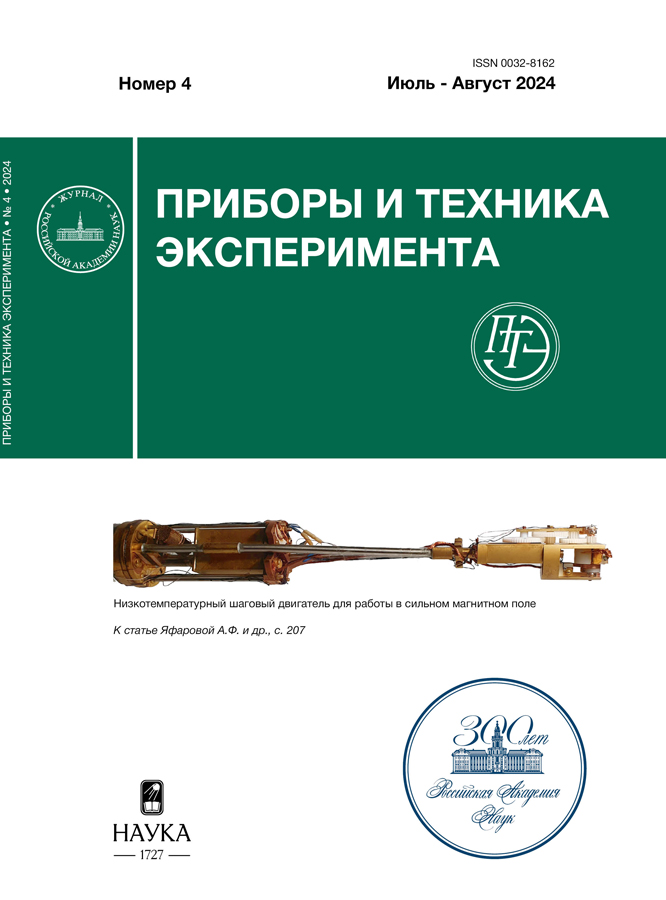Визуализация области прохождения ядерных реакций dd-синтеза методом кодирующих диафрагм на установке Искра-5
- Authors: Елин И.П.1, Жидков Н.В.1, Суслов Н.А.1, Ильин В.С.1, Гаранин Р.В.1, Поздняков Е.В.1
-
Affiliations:
- Российский федеральный ядерный центр – Всероссийский научно-исследовательский институт экспериментальной физики
- Issue: No 4 (2024)
- Pages: 37-41
- Section: ТЕХНИКА ЯДЕРНОГО ЭКСПЕРИМЕНТА
- URL: https://freezetech.ru/0032-8162/article/view/681067
- DOI: https://doi.org/10.31857/S0032816224040049
- EDN: https://elibrary.ru/NZFZMF
- ID: 681067
Cite item
Abstract
Для визуализации области прохождения ядерных реакций DD-синтеза использован метод регистрации протонов с энергией Ep = 3.02 МэВ, образующихся во втором безнейтронном канале, имеющим равную вероятность с реакцией в нейтронном канале. Приведены результаты регистраций на трековый детектор CR-39 области кумуляции плазмы с помощью двух различных кодирующих диафрагм и результаты оценок количества реакций в мишенях с обращенной короной этим методом.
Full Text
About the authors
И. П. Елин
Российский федеральный ядерный центр – Всероссийский научно-исследовательский институт экспериментальной физики
Author for correspondence.
Email: yelin.ivan.p@gmail.com
Russian Federation, Саров
Н. В. Жидков
Российский федеральный ядерный центр – Всероссийский научно-исследовательский институт экспериментальной физики
Email: zhidkov_nv@mail.ru
Russian Federation, Саров
Н. А. Суслов
Российский федеральный ядерный центр – Всероссийский научно-исследовательский институт экспериментальной физики
Email: yelin.ivan.p@gmail.com
Russian Federation, Саров
В. С. Ильин
Российский федеральный ядерный центр – Всероссийский научно-исследовательский институт экспериментальной физики
Email: yelin.ivan.p@gmail.com
Russian Federation, Саров
Р. В. Гаранин
Российский федеральный ядерный центр – Всероссийский научно-исследовательский институт экспериментальной физики
Email: yelin.ivan.p@gmail.com
Russian Federation, Саров
Е. В. Поздняков
Российский федеральный ядерный центр – Всероссийский научно-исследовательский институт экспериментальной физики
Email: yelin.ivan.p@gmail.com
Russian Federation, Саров
References
- McCrory R.L., Meyerhofer D.D., Betti R., et al. // Phys. Plasmas. 2008. V. 15. P. 055503. https://doi.org/10.1063/1.2837048
- Collins T.J.B., Marozas J.A., Anderson S., et al. // Phys. Plasmas. 2012. V. 19. P. 056308. https://doi.org/10.1063/1.3693969
- Lindl J.D., Amendt P., Berger R.L., et al. // Phys. Plasmas. 2004. V. 11. P. 339. https://doi.org/10.1063/1.1578638
- Regan S.P., Goncharov V., Igumenshchev I.V., et al. // Phys. Rev. Lett. 2016. V. 117. P. 025001. https://doi.org/10.1103/PhysRevLett.117.025001
- Döppner T., Callahan D.A., Hurricane O.A., et al. // Phys. Rev. Lett. 2015. V. 115. P. 055001. https://doi.org/10.1103/PhysRevLett.115.055001
- Abu-Shawareb H., Acree R., Adams P., et al. // Phys. Rev. Lett. 2022. V. 129. P. 075001. https://doi.org/10.1103/PhysRevLett.129.075001
- Ren G., Yan J., Liu J., et. al. // Phys. Rev. Lett. 2017. V. 118. P. 165001. https://doi.org/10.1103/PhysRevLett.118.165001
- Abe Y, Sunahara A., Lee S., et. al. // Appl. Phys. Lett. 2017. V. 111. P. 233506. https://doi.org/10.1063/1.5016531
- Satoh N., Watari T., Nishihara K., et.al. // Plasma Fusion Res. 2018. V. 13. P. 2401028. https://doi.org/10.1585/pfr.13.2401028
- Hohenberger M., Meezan N.B., Riedel W.M., et. al. // Rev. Sci. Instrum. 2021. V. 92. P. 033544. https://doi.org/10.1063/5.0040877
- Бессараб А.В., Долголева Г.В., Зарецкий А.И. и др. // ДАН СССР. 1985. Т. 282. № 4. С. 857.
- Бессараб А.В., Гайдаш В.А., Долголева Г.В. и др. // ЖЭТФ. 1992. Т. 102. С. 716.
- Гаранин С.Г., Душина Л.А., Елин И.П., и др. // ЖЭТФ. 2019. Т. 155. С. 759. https://doi.org/10.1134/S0044451019040199
- Daido H., Yamanaka M., Mima K., et. al. // Appl. Phys. Lett. 1987. V. 51. P. 2195. https://doi.org/10.1063/1.98937
- DeCiantis J.L., Séguin F.H., Frenje J.A., et al. // Rev. Sci. Instrum. 2006. V.77. P. 043503. https://doi.org/10.1063/1.2173788
- Суслов Н.А. // КЭ. 2000. T. 30. №8. С. 715. https://doi.org/10.1070/QE2000v030n08ABEH001796
- Елин И.П., Жидков Н.В., Суслов Н.А., Тачаев Г.В. // ПТЭ. 2020. № 2. С. 9. https://doi.org/10.31857/S003281622002010X
- Кравченко А.Г., Литвин Д.Н., Лазарчук В.П., Муругов В.М., Петров С.И., Сеник А.В., Прянишников И.Г. // ПТЭ. 2004. №2. С. 25.
Supplementary files














